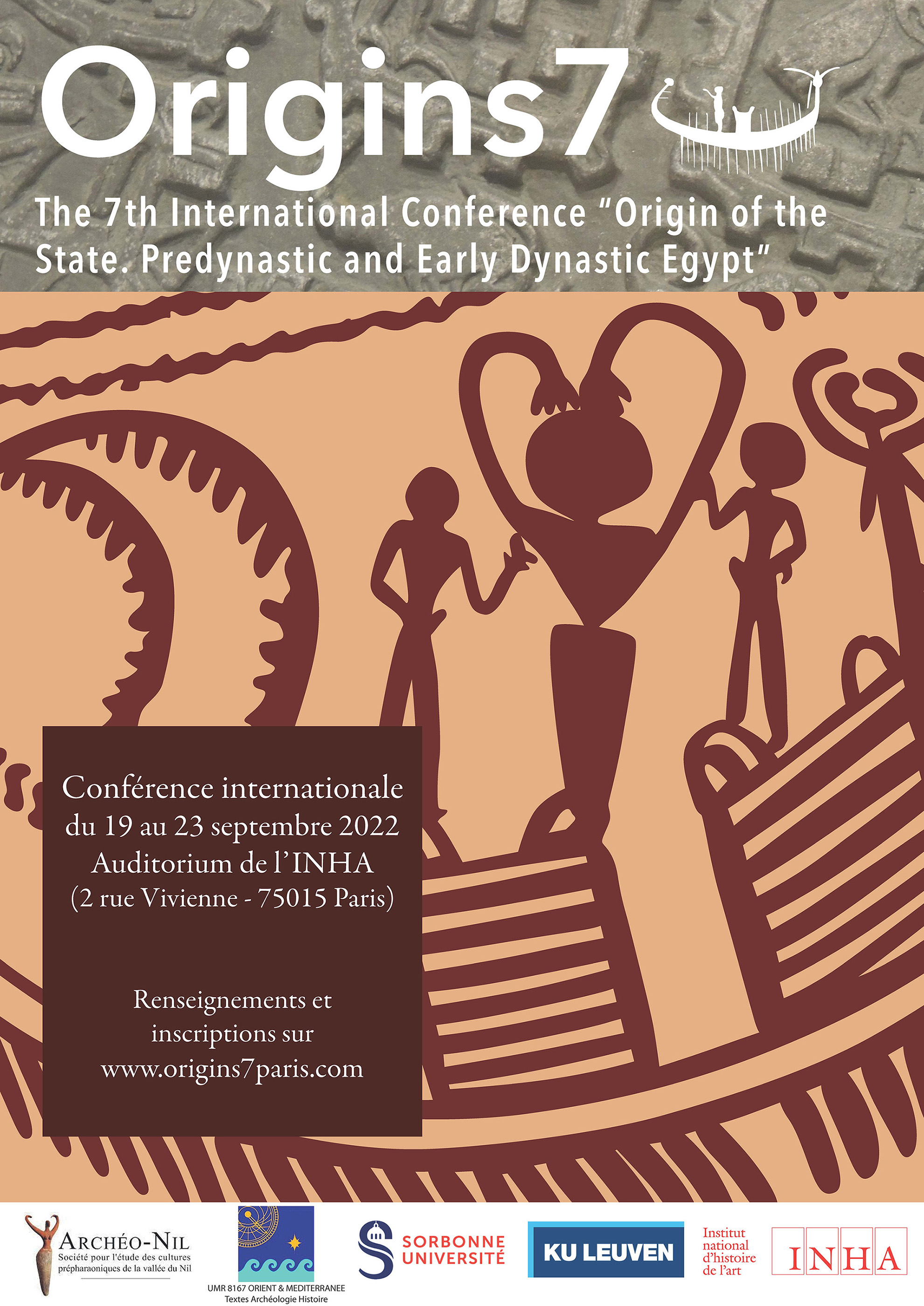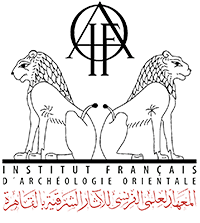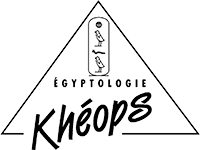ABU RAWASH
1st Dynasty elite cemetery in the Memphite region
■ Fieldwork dates
2009-2014
■ Project director
Yann TRISTANT (Macquarie University, Sydney, Australie)
■ Participants
Yann ARDAGNA | Michel BAUD | François BRIOIS | Jacinta CARRUTHERS | George CASTEL | Alain CHARRON | Aurélie CUÉNOD | Céline DAVID | Morgan DE DAPPER | Julie DELMOTTE | Ahmed GAMAL-ED-DIN FAHMY | Basem GEHAD FATHY | Adam FAZZOLARI | Hassan IBRAHIM EL AMIR | Keita TAKENOUCHI | April KENNEDY | Alain LECLER | Abeid MAHMOUD | Sylvie MARCHAND | Marie-Delphine MARTELLIÈRES | Abd el-Rahman MEDHAT | Ihab MOHAMED IBRAHIM | Olivier ONÉZIME | Caroline PARTIOT | Gaël POLLIN | Yannick PROUIN | Ilona REGULSKI | Olivier ROCHECOUSTE | Aurélie SCHENK | Romain SÉGUIER | Jane SMYTHE | Michel WUTTMANN
■ Institutions
- Institut français d’archéologie orientale (Le Caire)
- Department of Ancient History, Macquarie University, Sydney
■ Presentation
8 km north-west of the Gîza plateau, the region of Abu Rawash contains archaeological remains from different periods ranging from the Early Dynastuic to the Coptic period. They are almost exclusively funerary features covering all phases of the Pharaonic period, and places of worship for the most recent eras.
After K. Lepsius' survey of the pyramid in the winter of 1842-1843, W.M.F. Petrie carried out a survey of the pyramid between 1880 and 1882. The Institut français d’archéologie orientale undertook the first real archaeological excavations between 1901 and 1902, on the initiative of its director É. Chassinat, clearing the eastern side of the pyramid. The discovery of quartzite statues’ fragments, some of which were inscribed, made it possible to attribute the monument to Radjedef, son of Cheops and third ruler of the 4th Dynasty (around 2580 BCE). Research was resumed on the pyramid between 1912 and 1913 under the direction of P. Lacau. He was also interested in the area around the monument. As early as 1913, he entrusted P. Montet with the excavation of a small archaic cemetery to the west of the pyramid, named M after the name of his first excavator, Pierre Montet; and in 1922, he granted F. Bisson de la Roque to study the neighbouring necropolis of the Old Kingdom. Work on Cemetery M (1913-1914) and the Early Dynastic cemetery at the foot of the hill was continued from 1957 to 1959 by a team from the Leiden Museum led by A. Klasens. Excavations resumed in the years 1990-2000 on the Radjedef complex as part of a joint Ifao/University of Geneva project. Work was also carried out on the elite 4th Dynasty cemetery, under the direction of M. Baud until 2009. Since then, investigations have resumed on the Early Dynastic cemetery. Forgotten for more than a century, the large tombs of the M cemetery have recently benefited from a new archaeological programme conducted by the French Institute of Oriental Archaeology in Cairo in collaboration with Macquarie University in Sydney (Australia).
Cemetery M is located on a small rocky spur which dominates the north-western plain of the Abu Rawash site from a height of 25 m. 25 mud-brick tombs dating from the Naqada IIIC2 phase (middle of 1st Dynasty) have been identified. The discovery of this cemetery was an event in the history of Early Dynastic research: 25 years before the excavation of the Saqqara Necropolis, tombs similar to those previously identified in Abydos were found for the first time in Lower Egypt. Too often and unjustly forgotten, this elite cemetery was an important milestone in the development of the Pharaonic civilisation. The on-site re-examination provides valuable information for our understanding of the 1st Dynasty funerary architecture. The comparison with the data from recent excavations of contemporary cemeteries in the Eastern Nile Delta and the Memphite region is already of great importance for the understanding of the cultural dynamics of the Early Dynastic communities and the integration of Lower Egypt into the emerging sphere of royal power. Finally, the study of material excavated by previous archaeologists must be associated with the resumption of excavations of the tombs. The team has thus conducted several study missions to the Louvre Museum, the Egyptian Museum in Cairo, the Institute of Egyptology of the University of Strasbourg and the Ifao.
The architecture, the quality and quantity of the funerary material illustrate the rank and splendour of Abu Rawsh’s mastaba owners. With their stone portcullis, subsidiary tombs, walls decorated with niches and redans, and funerary boats - the oldest known in Egypt - the great tombs of Abu Rawash contribute to a more accurate picture of the Egyptian aristocracy at the time when the Sate was being established on the banks of the Nile.
■ Main publications
Les résultats des fouilles récentes et des études de collections seront prochainement publiés dans deux volumes des Fouilles de l’Institut français d’archéologie orientale en cours de préparation.
Klasens, A., The Excavations of the Leiden Museum of Antiquities at Abu-Roach: Report of the Third Season 1959. Part II. Cemetery M, Oudheidkundige Mededelingen vit het Rijksmuseum van Oudheden 42 (1961): 108-128.
Lesur, J., Emploi et symbolisme des cornes de bovins au Protodynastique. Exemples d'Abou Rawach, in Porcier, S.; Ikram, S. & Pasquali, S. (eds.), Creatures of earth, water and sky. Essays on animals in ancient Egypt and Nubia. Leiden: 211-220.
Montet, P., Tombeaux de la Ire et de la IVe dynasties à Abou-Roach, Kêmi 7 (1938): 11-69.
Montet, P., Tombeaux de la Ière et de la IVe dynasties à Abou-Roach, deuxième partie: inventaire des objets», Kêmi 8 (1946) : 157-227.
Tristant, Y., Les tombes des premières dynasties à Abou Roach, Bulletin de l’Institut français d’archéologie orientale 108 (2008): 325-370.
Tristant, Y., Abou Rawach. La nécropole de la Ire dynastie, Archéologia 481 (2010) : 32-37.
Tristant, Y., Abu Rawash 2009-2010. Preliminary results from the re-excavation of 1st Dynasty elite mastabas at the “M” Cemetery, in Adams, M.D. (ed.); Midant-Reynes, B.; Ryan, E.R. & Tristant, Y. (coll.), Egypt at its Origins 4. Proceedings of the Fourth International Conference “Origin of the State. Predynastic and Early Dynastic Egypt”, New York, 26th-30th July, 2011, Orientalia Lovaniensia Analecta 252, Leuven/Paris/Walpole, MA, 2016: 155-176.
Tristant, Y. Abu Rawash. New data from the recent excavation of 1st Dynasty elite mastabas at the “M” cemetery, in Midant-Reynes, B., Tristant, Y. & Ryan, E.M. (dir.), Egypt at its Origins 5. Proceedings of the Fifth International Conference “Origin of the State. Predynastic and Early Dynastic Egypt”, Cairo, 13th-18th April 2014, Orientalia Lovaniensia Analecta 260, Leuven/Paris/Bristol, CT, 2017: 465-495.
Tristant, Y, 1st Dynasty stone granary models from Abu Rawash?, Bulletin of the Australian Centre for Egyptology 26 (2018): 91-102.
Tristant, Y., Abu Rawash. Cemetery M (First Dynasty), in Donovan, L. & Binder, S. (dir.), Tombs, Trowels and Treasures. The first 40 years of Egyptology at Macquarie University, The Australian Centre for Egyptology Studies 12, Oxford, 2018: 236-244.
Tristant, Y., Abou Rawach. Nécropole protodynastique M, in Coulon, L. & Cressent, M. (dir.), Archéologie française en Égypte. Recherche, coopération, innovation, Bibliothèque Générale 59, Le Caire, 2019 : 64-69.
Tristant, Y., À propos des mastabas de la Ire dynastie à Abou Rawach et de quelques dépôts particuliers de coquillages, cornes de boeufs et céramiques observés dans les fondations des tombeaux, in Vuilleumier, S. & Meyrat, P. (dir.), Sur les pistes du désert. Mélanges offerts à Michel Valloggia, Gollion, 2019: 227-242.
Tristant, Y.; Baud, M. & Charron, A., Abou Rawach, un site ressuscité, Archéologia 48 (2010): 58-59.
Tristant, Y.; Briois, F.; Castel, G. & Onézime, O., ‘Barques sur le Nil’... Le mastaba M06 d'Abou Rawach et sa barque funéraire (Ire dynastie, règne de Den). Découverte de la plus ancienne embarcation égyptienne actuellement conservée en Égypte. Bulletin de l’Institut français d'archéologie orientale du Caire 114/2 (2014): 563-588.
Tristant, Y. & Smythe, J., New excavations for an old cemetery. Preliminary results of the Abu Rawash Project on the M Cemetery (1st Dynasty), in Friedman, R.F. & Fiske, P.N. (eds.), Egypt at its Origins 3. Proceedings of the Third International Conference “Origin of the State. Predynastic and Early Dynastic Egypt”, London, 27th July - 1st August 2008, Orientalia Lovaniensia Analecta 205, Leuven/Paris/Walpole, MA, 2011: 313-322.
■ Articles publiés dans Archéo-Nil
Archéo-Nil 25 (2015)
Begon Matthieu
La ville de Bouto (Pé) sous la Ire dynastie. Étude d’une mention inédite inscrite sur une étiquette méconnue découverte à Abou Rawach (Louvre Inv. AF 11872)
11-18
Archéo-Nil 18 (2008)
Tristant, Y.
Deux grands tombeaux du cimetière M d’Abou Rawach (Ire dynastie)
131-147
Archéo-Nil 15 (2005)
Baud Michel
La nécropole d’élite de la Ire dynastie à Abou Rawach : essai cartographique
11-16
■ Websites
Abou Rawach, Complément de fouille sur le cimetière M (Ière dynastie)
Institut français d’archéologie orientale (Ifao)
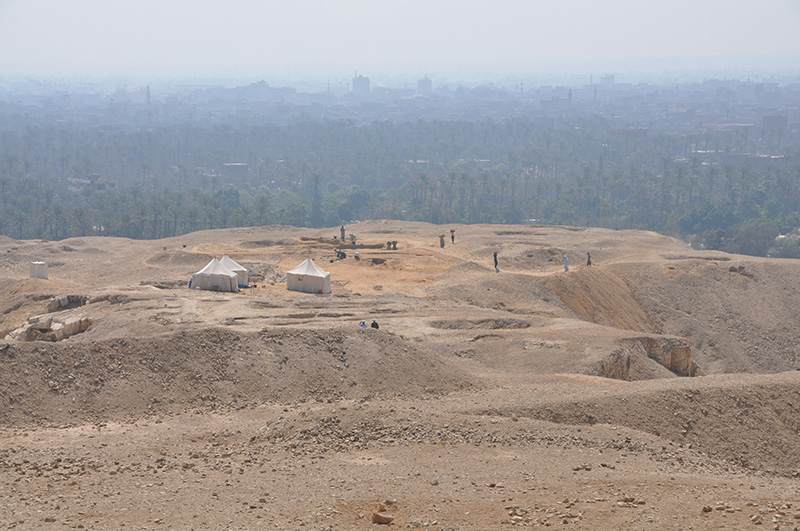
Vue générale du cimetière M d’Abou Rawach
(Photo Y. Tristant)
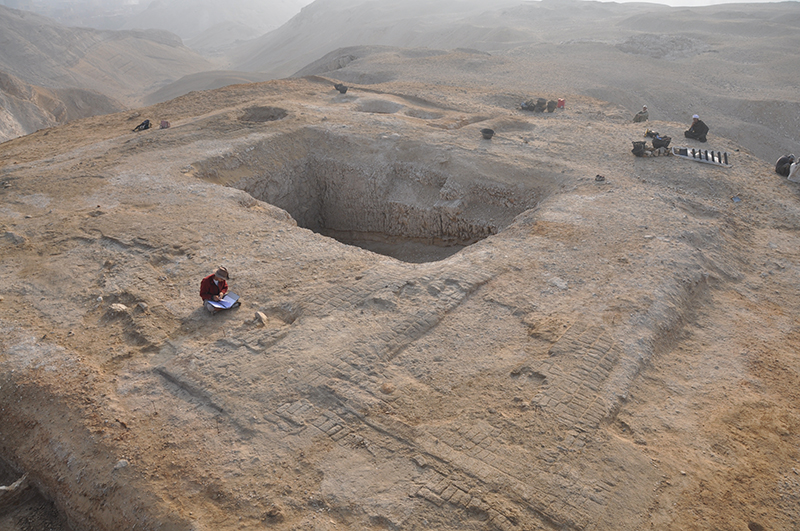
General view of Abu Rawash cemetery
(Photo Y. Tristant)

Mastaba M12 at the east of the cemetery
(Photo Y. Tristant)

Mastaba M02. L’entrée de la chambre funéraire est encore partiellement fermée par la herse en pierre
(Photo Y. Tristant)

Mastaba M07. Detail of the Eastern wall’s niches
(Photo Y. Tristant)
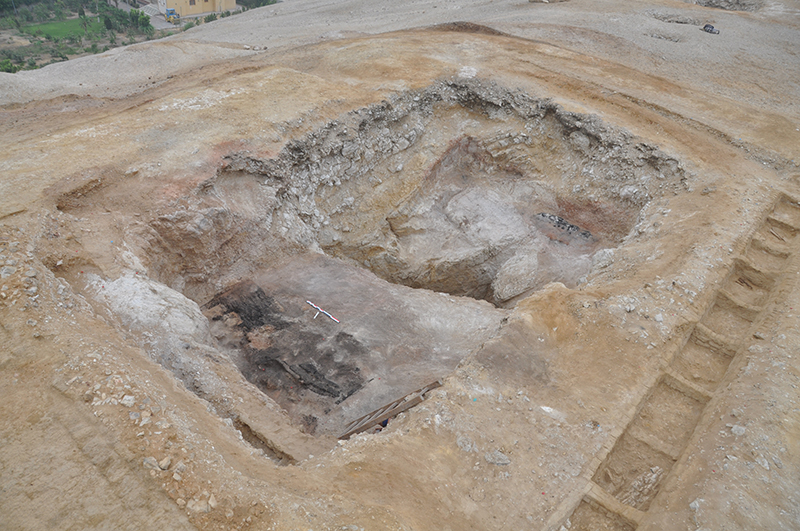
Mastaba M17. Row of subsidiary tombs at the east
(Photo Y. Tristant)

Subsidiary tomb S1439 at the west of mastaba M02
(Photo Y. Tristant)
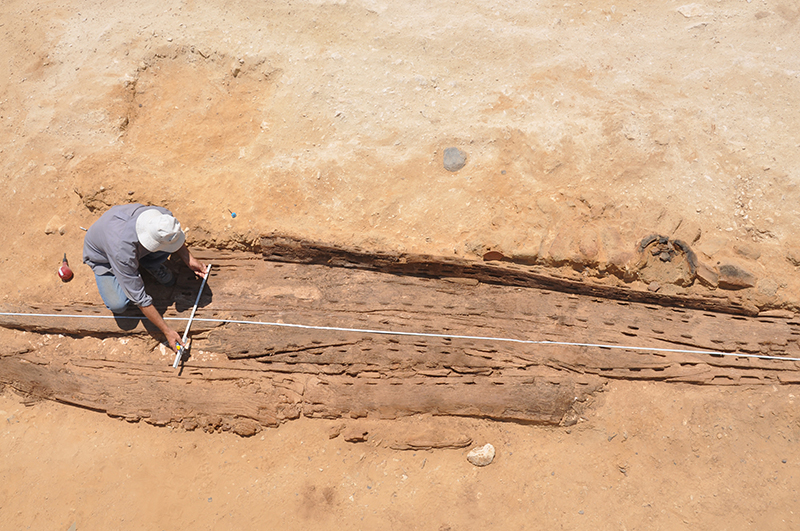
Wooden funerary boat at the north of mastaba M06
(Photo Y. Tristant)
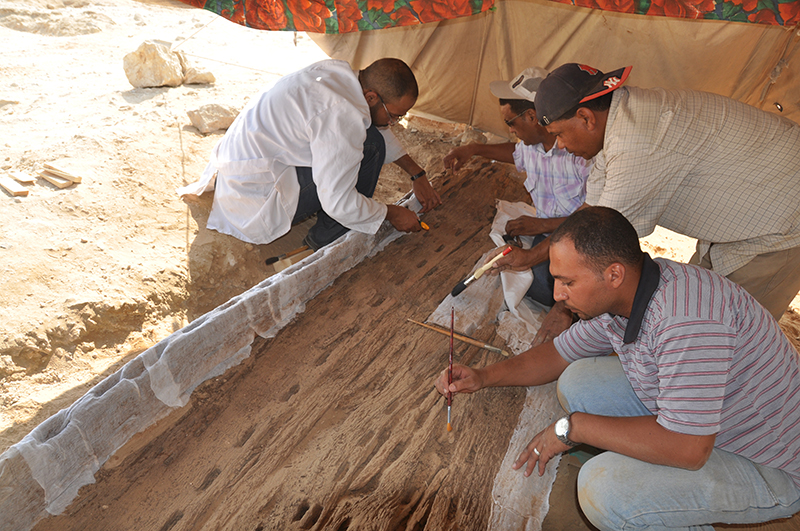
In situ conservation of M06 funerary boat
(Photo Y. Tristant)
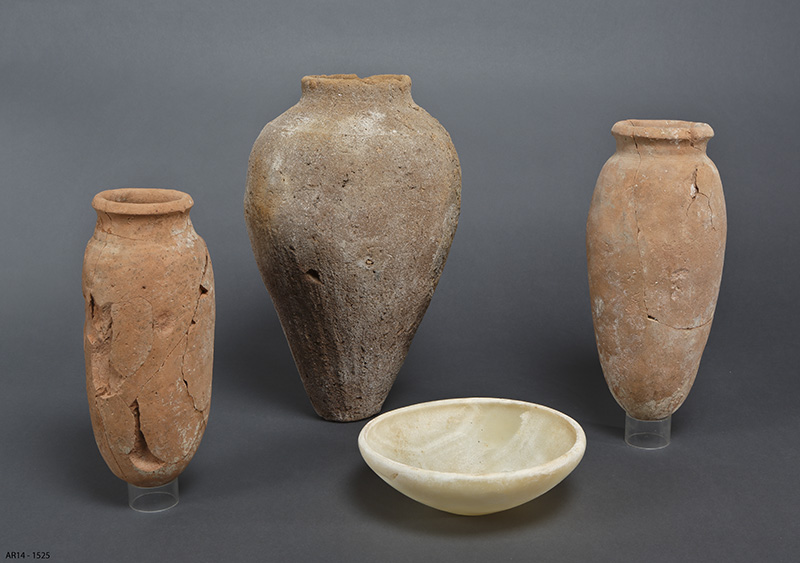
Pottery jars and calcite bowl from subsidiary tomb S1524 at the east of mastaba M04

Seal impression with the name of King Den











